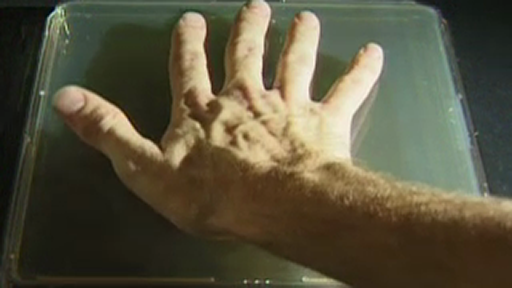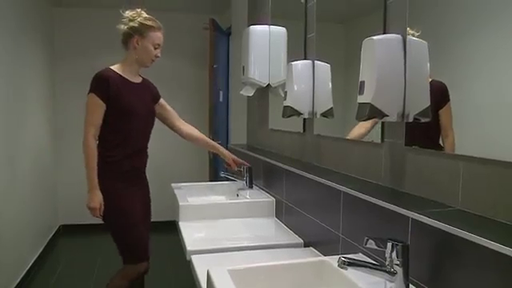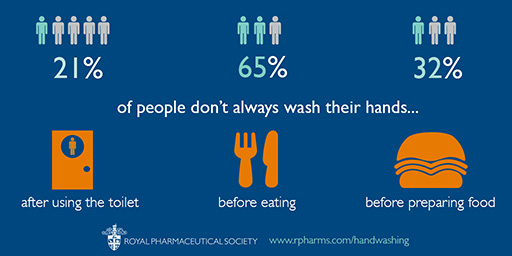2.3 The role of hand washing in reducing the spread of bacteria
Unwashed hands transmit bacteria from hand to mouth and by the faecal–oral route (see Video 2).

Transcript: Video 2 Bacteria on our hands.
Hygienic behaviours such as hand washing are an important
Is hand washing with soap an example of a primary or a secondary hygiene barrier?
Washing hands after going to the toilet is a primary barrier; washing hands before preparing or consuming food is a secondary barrier.
In the next activity, you will look at the effectiveness of hand washing to remove bacteria.
Activity 3 Investigating the effectiveness of hand washing with soap
In this activity you carry out a very simple experiment to look at the effectiveness of hand washing to remove bacteria. Since bacteria are too small to see, you will use glitter to represent the infectious pathogens.
Materials
- Glitter (environmentally friendly glitter can be found online)
- Hand lotion
- Soap and hand-washing facilities
- Paper kitchen towel
Method
- a.Put a small amount of hand lotion on your hands and rub it in so that it is spread out evenly.
- b.Place a pea sized pile of glitter in the palm of one hand and rub your hands together to spread the glitter over both palms.
- c.Note down where the glitter is spread over your hands. You may like to take a photograph or draw a sketch of the areas of your hands with glitter on them. Record your observations in Table 1.
- d.Wipe your hands with a dry piece of kitchen towel.
Now consider the following questions:
- How much of the glitter is still on your hands?
- Has the paper towel effectively removed all of the ‘glitter bacteria’?
- e.Record your observations in Table 1.
- f.Now repeat the experiment but at the end of Step c wash your hands in cold water.
- g.Record your observations in Table 1.
- h.Finally repeat the experiment once more, washing your hands in warm water with soap at the end of Step c.
- i.Record your observations in Table 1 and then answer the questions below.
| Hand washing intervention | Observations |
|---|---|
| No hand washing | |
| Dry kitchen towel | |
| Cold water | |
| Warm water with soap |
1. Which hand-washing method was the most effective at removing the ‘glitter bacteria’?
Discussion
Hand washing with soap and warm water is more effective than a paper towel or cold water at removing bacteria.
2. Were there any areas where the ‘glitter bacteria’ remained on your hands after using all of the hand-washing techniques?
Discussion
You may have found ‘glitter bacteria’ between your fingers or on the backs of your hands even after hand washing with soap. These places are frequently missed when washing hands, allowing bacteria to be transmitted.
3. What hand-washing advice would you give to healthcare workers hoping to reduce the spread of antibiotic-resistant bacteria?
Discussion
Many hospitals and other healthcare settings now provide training and guidance on effective hand washing as part of their infection control procedures (see Video 3). Posters with this guidance are often displayed near handwashing stations.

Transcript: Video 3 Effective hand washing.
[MUSIC PLAYING]
In LMICs, the lack of access to clean water and soap can make sustaining effective hand washing difficult. However, even when clean water and soap are freely available, many people, including healthcare professionals, still do not wash their hands thoroughly (Judah et al., 2010) (Figure 7).

On average, healthcare workers adhere to recommended hand hygiene procedure only 40% of the time (WHO, 2009) but, as you will see in the next section, improving hand washing in hospitals and other healthcare settings can be an effective way to reduce the spread of antibiotic resistance.

